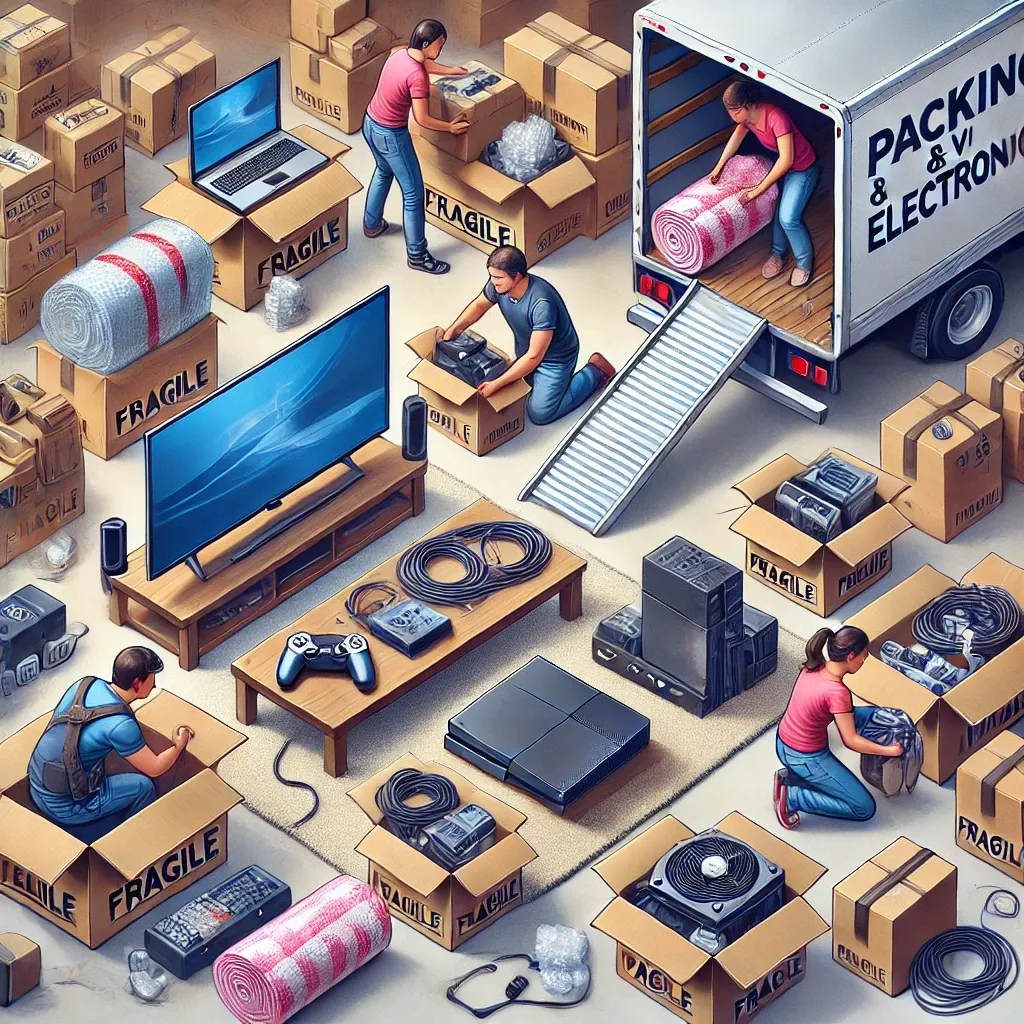Sometimes moving is hard, especially when you have to pack up and move your gadgets. It is very important to be careful with these things during a move because they are often fragile, expensive, and necessary to your daily life. No matter if you're moving across town or to a different state, you should make sure your gadgets are safe. Here are some important tips to help you safely pack and move your tools so they get to your new home in perfect shape.

1. Prepare an Inventory of Your Electronics
Before you start packing, create a detailed inventory of all your electronic devices. This list will not only help you keep track of your items but also ensure nothing is left behind. Make sure to note down the make, model, and serial numbers of each item, as well as take photos for insurance purposes. This step is particularly important if you're hiring professional packers and movers, as it helps in assessing any potential damage during the move.
2. Gather the Right Packing Materials
Having the right packing materials is crucial for the safety of your electronics. You'll need sturdy boxes, preferably the original packaging if available, bubble wrap, packing peanuts, and anti-static packing materials. Anti-static bubble wrap is especially important for preventing static electricity from damaging your sensitive devices.
3. Label and Organize Cables
One of the most frustrating aspects of moving electronics is dealing with tangled cables. To avoid this, label each cable with a tag or a piece of tape that corresponds to the device it belongs to. You can also take a photo of how the cables are connected before unplugging them. Pack the cables separately in zip-lock bags and label them accordingly. This will make setting up your electronics in your new home much easier.
4. Secure the Screens
Screens, such as those on televisions, monitors, and laptops, are particularly vulnerable during a move. Protect them by placing a soft cloth or foam sheet over the screen, and then wrapping it in bubble wrap. Place the screen upright in a box and fill any empty spaces with packing peanuts or crumpled paper to prevent it from moving during transit.
5. Backup Important Data
Before packing your computers and other devices that store data, ensure that all important files are backed up to an external hard drive or cloud storage. This will safeguard your data in case of any unforeseen damage to the device during the move.
6. Pack Items in Their Original Boxes
If you still have the original boxes for your electronics, use them for packing. These boxes are designed to fit your devices perfectly and provide the best protection. If the original boxes are not available, choose sturdy, appropriately-sized boxes and use plenty of padding to secure the items.
7. Label Boxes as Fragile
Clearly label all boxes containing electronics as "FRAGILE" and indicate which side should face up. This will alert movers to handle these boxes with extra care. Additionally, try to load these boxes last onto the moving truck so that they are the first to be unloaded at your new home.
8. Consider Professional Help
While packing and moving electronics yourself can save money, hiring professional packers and movers can provide peace of mind. Experienced movers know how to handle delicate items and have the right tools and materials to ensure a safe move. If you're unsure about packing certain items, or if you're pressed for time, it might be worth considering professional help.
9. Use Moving Referral Services
Finding trustworthy packers and movers can be a challenge, especially with so many options available. This is where moving referral companies like MoveMyGhar come into play. They can connect you with reputable movers who have a proven track record of safely transporting electronics and other valuable items. Utilizing such a service can save you time and ensure you find a reliable company that meets your specific moving needs.
10. Unpack and Set Up with Care
Once you've arrived at your new home, take your time unpacking your electronics. Carefully remove them from their boxes, check for any signs of damage, and test each device to ensure it’s working properly. Reconnect the cables using the photos or notes you took earlier, and enjoy your electronics in your new space.
Moving your electronics safely requires careful planning and the right approach. By following these tips, you can protect your valuable devices from damage and ensure they work seamlessly in your new home. Whether you choose to handle the move yourself or hire professionals, the key is to be organized and proactive in your packing efforts. And remember, when in doubt, referral services like MoveMyGhar can guide you to the best packers and movers for a smooth and stress-free relocation.